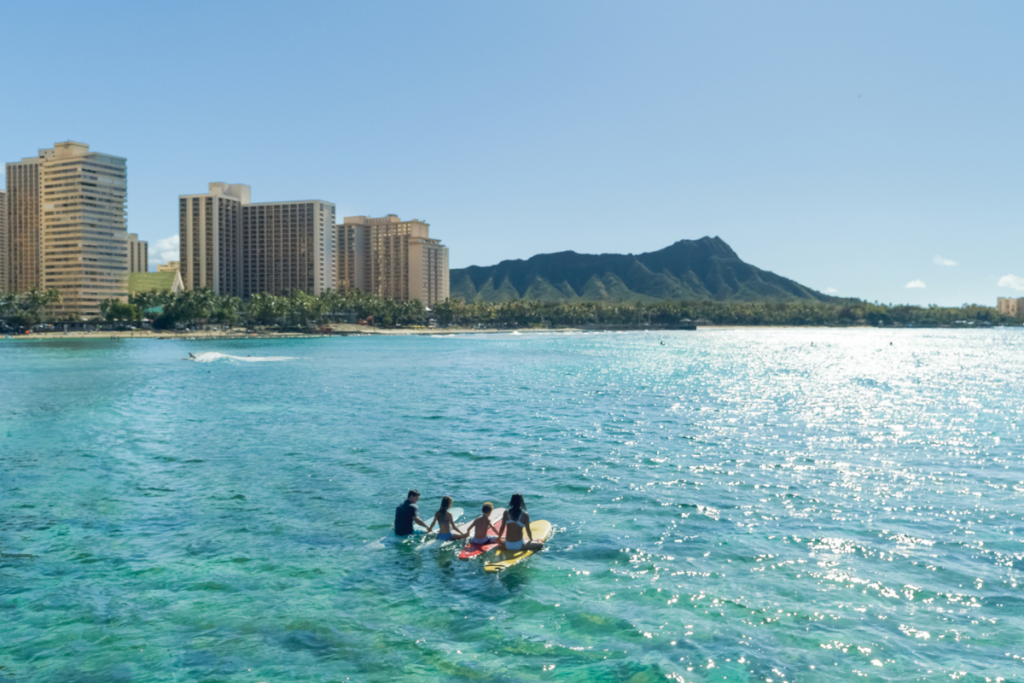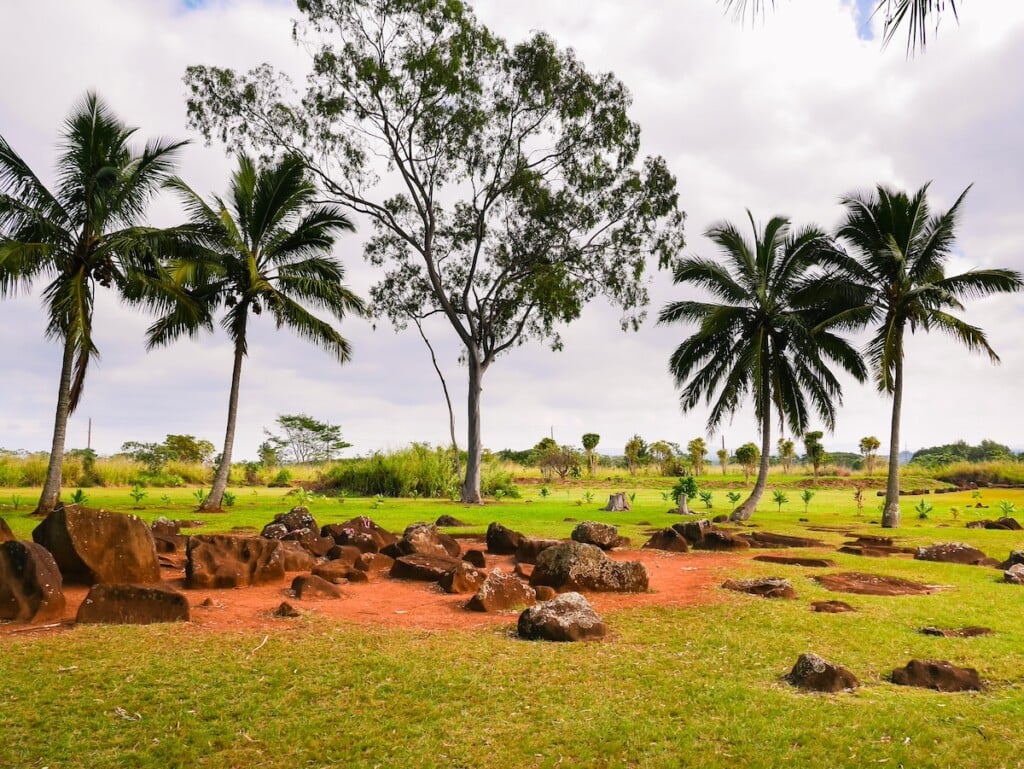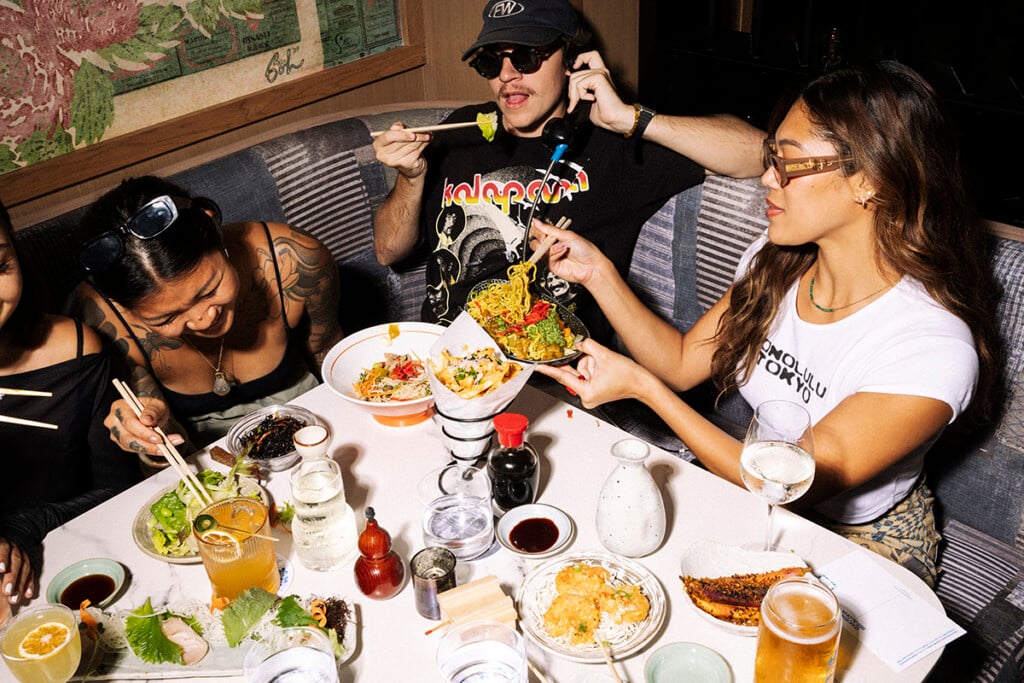Kuilima Farm Grows Food for the Community and this North Shore Resort
Visitors are invited to this North Shore farm to learn about the area’s rich agricultural history and pick their own food.

The server at Alaia places a bowl in front of me full of tender baby arugula topped with red and golden beets, slices of watermelon radishes and thinly sliced hearts of palm. Everything except the hearts of palm was grown at a nearby farm.
That may not sound too unusual, especially in Hawai‘i where restaurants are trying to source as many ingredients locally as possible. But this restaurant is at The Ritz-Carlton O‘ahu, Turtle Bay on O‘ahu’s North Shore. And the farm where these ingredients are from is also owned by the hotel.
In 2016 then-Turtle Bay Resort (now The Ritz-Carlton O‘ahu, Turtle Bay) committed to preserving a large parcel of land mauka (toward the mountain) along Kamehameha Highway for farming. That means the 468 acres the resort owned, which was already being farmed by small growers, would remain zoned for agriculture in perpetuity. The land—along with another 628 acres along the coastline—is now under a conservation easement. It can’t be altered and housing can’t be built on it, even if the resort sells it.

The farm boasts a state-of-the-art hydroponics greenhouse, where it grows a variety of leafy greens for the resort.
Photo: Aaron K. Yoshino
The area is now Kuilima Farm. Owned by the hotel and managed by Honolulu-based natural resource conservation company Pono Pacific, the farm grows veggies, herbs and edible flowers specifically for the hotel’s restaurants, of which Alaia is one. About 25 acres are in active production, with crops like ‘ulu (breadfruit), leafy greens, carrots, beets and radishes. Another 11 private farmers—the ones who had been farming here prior to 2016—still operate, supplying the hotel with produce, too.
Currently, the farm distributes 2,000 pounds of produce a week, with 800 pounds going directly to The Ritz-Carlton O‘ahu, Turtle Bay.
“About 90% of our food is imported, and that’s a big hurdle,” says Ramsey Brown, vice president of diversified agriculture at Pono Pacific. “We saw that get rattled during the pandemic, so there’s a lot of momentum in Hawai‘i to bringing that number down.”
But producing food—and contributing to the state’s goal of food security—is a part of what Kuilima Farm does.

Recently, the farm starting selling honey from its 12 apiaries.
Photo: Aaron K. Yoshino
It hosts community events—a fall festival with a pumpkin patch and a spring event where visitors can pick their own veggies—and has 34 garden plots for North Shore residents who want to grow their own food.
It recently launched 45-minute farm tours, where visitors can walk through the diversified crops and native plants and learn about the area’s rich agricultural history and the hotel’s commitment to sustainability.
“For us, it was important to have three pillars: actual food production, education and experiences,” Brown says. “We want to provide opportunities for the community to come onto the farm, to get their hands back in the land… For us, it’s more than just the PR. It’s really about the feeling people have when they come to the farm, for the kids to pull carrots out of the ground. It’s so simple, but these are the experiences they talk about later.”
We meet our tour guide at the stands alongside Kamehameha Highway, about a mile from the hotel. Some of these farm stands have been here for generations, selling locally grown sweet corn, apple bananas, papaya and coconuts.
Our first stop on the walking tour is a state-of-the-art hydroponics greenhouse, where the farm grows a variety of leafy greens for the resort. (Some are bagged and sold in the farm stand, too.) There are rows and rows of beautiful red and green heads of Salanova butter lettuces, sprouting from grow channels that look like rain gutters. This soil-less growing method requires less space and water than traditional in-ground farming, and it produces consistent harvests with less damage from pests.

Find fresh, seasonal produce, like mangoes, avocados and bananas, at the farm’s roadside stand.
Photo: Aaron K. Yoshino
Just outside the greenhouse are rows of edible flowers—nasturtiums, lavender, butterfly pea, marigolds—that the hotel uses as garnishes and the spa uses for its teas.
Next, we walk through a circular garden with all sorts of specialty crops and herbs—requests from the hotel’s culinary team—and native plants, including dryland kalo (taro), māmaki, ‘ilima and noni. There are papaya trees, liliko‘i (passion fruit) vines and a grove of ice cream bananas.
Other parts of the farm are not on the tour, including its 10 acres of carrots, beets, radishes and leafy greens beyond a grove of ‘ulu trees, and its apiary with 12 hives. The farm started selling its second harvest of honey earlier this year.
The farm plans to grow more ‘ulu trees and double its number of hives. It also aims to look at ways to grow more sweet corn and tomatoes—both high-demand crops—and to create an area for lā‘au lapa‘au, or Native Hawaiian medicinal plants.
“What we’re doing,” Brown says, “is pretty unique.”
Farm tours run at 9 and 10:30 a.m. every Wednesday, Thursday and Friday. Cost is $45 adult ($35 for kama‘āina and military), $35 children 12 and under ($25 for kama‘āina and military kids). Meet at the farm stand at 57-146 Kamehameha Highway, Kahuku. (808) 628-7400, (808) 753-7861, kuilimafarm.com.
This story was originally published in our Summer 2024 issue, which you can buy here. Better yet, subscribe and get HAWAIʻI Magazine delivered to right to your mailbox.


